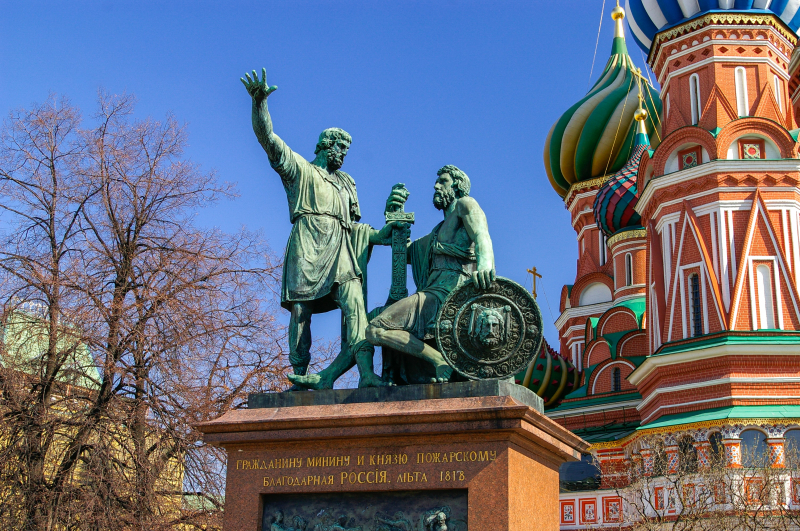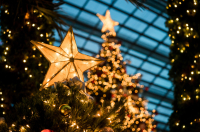Historical background
- Chapter 1. The roots
The history of the Russian Unity Day dates back to the Time of Troubles or Smuta (1598-1613) – an awfully turbulent period in Russian history characterized by social and political crises intertwined with ongoing wars with Sweden and Poland. Drenched deep in civil unrest, Russia fell victim to the powerful Polish–Lithuanian Commonwealth, which invaded the country and occupied Moscow. The city was under occupation for two years up until 1612 when Kuzma Minin, a merchant from Nizhny Novgorod, and Dmitry Pozharsky, a high-ranking prince, led a historical uprising and freed the city from the aggressors. The two became national heroes and the day received the status of a national holiday by order of tsar Mikhail Romanov (1596-1645) in 1613. The Day of Moscow’s Liberation from Polish invaders symbolized the country's unity against a common enemy and was celebrated until 1917.
- Chapter 2. The Soviet Union
The fall of the Winter Palace in Petrograd (now St. Petersburg) in 1917 put an end not only to the Russian monarchy: the tradition of celebrating the country’s unity and diversity faded into oblivion and was replaced by a new one. From 1918 on, the peoples of the Soviet Union, a socialist state officially established in 1922, started to commemorate the October Revolution on November 7 (New Style; October 25 in Old Style). An essential part of the celebrations were demonstrations and a military parade, with the first one being held in 1919 and the most famous one in 1941.
- Chapter 3. Modern Russia
A new state, a new take… In 1991, the Soviet hammer-and-sickle flag was lowered to give the start to a new state with different values. After being diplomatically named the Day of Accord and Conciliation and then one of several Days of Military Honour, the holiday was reviewed once again and in 2005, President Vladimir Putin removed November 7 from the list of official public holidays and reintroduced Unity Day. Ever since, November 4 has been known as National Unity Day in Russia – a day meant to promote patriotism and solidarity between different ethnic groups.
Celebrations
While Nizhny Novgorod has a historical legacy and Moscow – the Monument to Minin and Pozharsky, St. Pete doesn’t fall short, too. Traditionally, the city gears up for the celebration by hoisting national flags and throwing an exciting program full of parades, fireworks, entertainment and cultural events (such as the Festival of Light). Although there's not much going on in the way of celebrations this year, people still appreciate their official days off and take this time to be with their loved ones or go on a quick getaway if possible.
Head here to learn more about other Russian holidays and their history.




